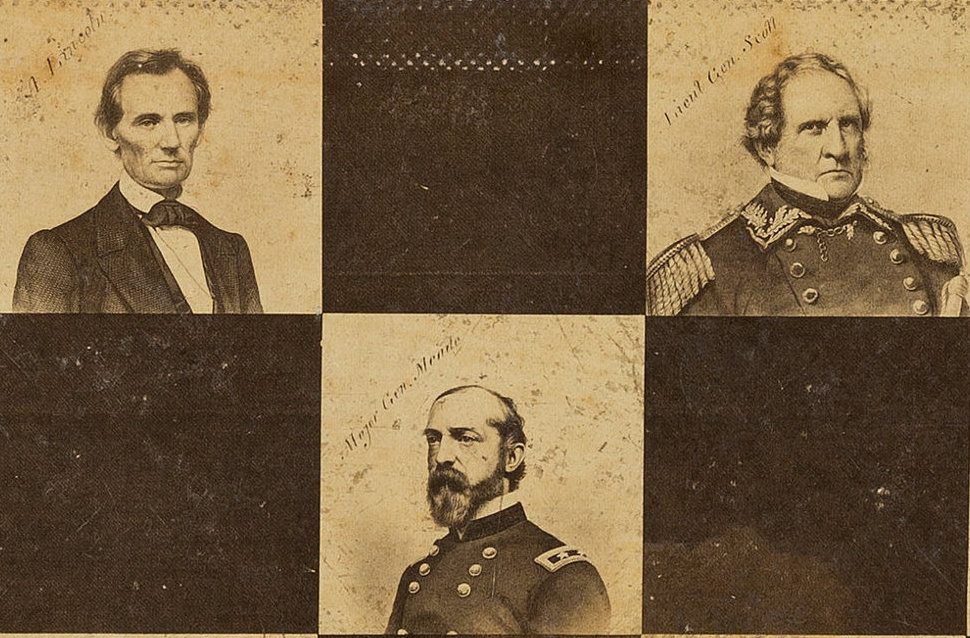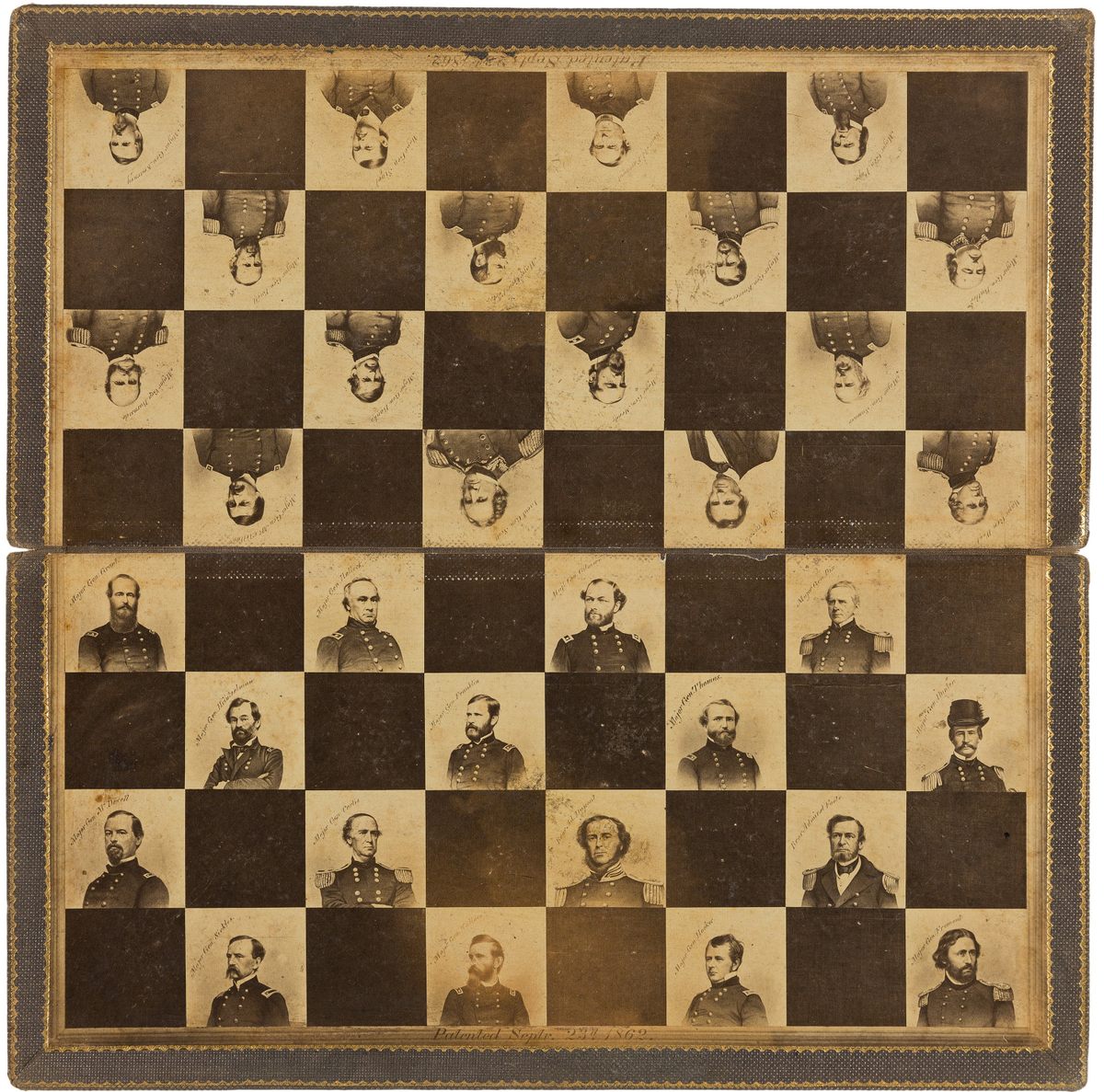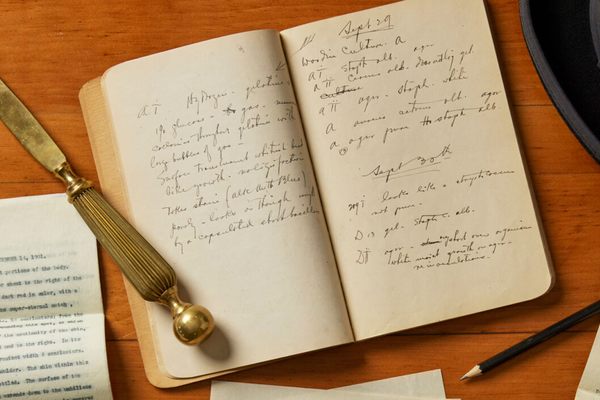For Sale: A Civil War-Era Checkerboard Featuring Union Generals
A themed version of the board game, to help stave off wartime boredom.

Admit it, you’ve always wondered what it would feel like to do a double jump over Rear Admiral Samuel Francis Du Pont and General Henry “Old Brains” Halleck, or holler “King me!” while stacking two pieces on the mug of explorer-turned-general John C. Frémont. If that’s your scene, we have the checkerboard for you.
American Heritage Auction House is offering an 1862 checkerboard featuring the faces of Union military leaders from the Civil War. Each white square on the board features a different person, including famed commanders such as Ulysses S. Grant and Ambrose Burnside (with his signature facial hair). Records show the board was created by Walter S. Hill and Samuel T. Reed of New York City, and their patent wasn’t just for Civil War-themed gaming, but for any design of a checker or chess board, “having its squares provided with portraits.”

According to Steve Lansdale, Public Relations Specialist at Heritage, experts at the auction house believe the board was likely created to be sold to soldiers. The life of a soldier on either side of the bloody conflict was pretty regimented and destitute. Days without fighting began at dawn and were filled with variations of combat training, mustering formations, cleaning the camp and weapons, guard duties, and, for Union soldiers, usually a dress parade to cap off the evening. There was also a hands-on education in fighting off disease and learning to boil clothes to rid them of lice and other parasites.
Games did play a role in maintaining a sense of normalcy amid the violence and boredom of wartime camp life, but there wasn’t much time for them. When not working or trying to survive dysentery, both Union and Confederate soldiers spent a majority of their downtime foraging for food. Rations grew slimmer as the war went on and supply lines were twisted into logistical nightmares. In whatever sliver of time soldiers had left, they might repair uniforms, write letters, read, gamble, sing, or, finally, play board games. Most soldiers only spent one out of every 30 days engaged in combat, and even then only when weather conditions were favorable. Games and songs were vital for passing the time. All the better, one supposes, if you could also see the faces of the men who were ordering you to fight.
Bidding for the historic checkerboard is open and runs through May 4. Your move.







Follow us on Twitter to get the latest on the world's hidden wonders.
Like us on Facebook to get the latest on the world's hidden wonders.
Follow us on Twitter Like us on Facebook